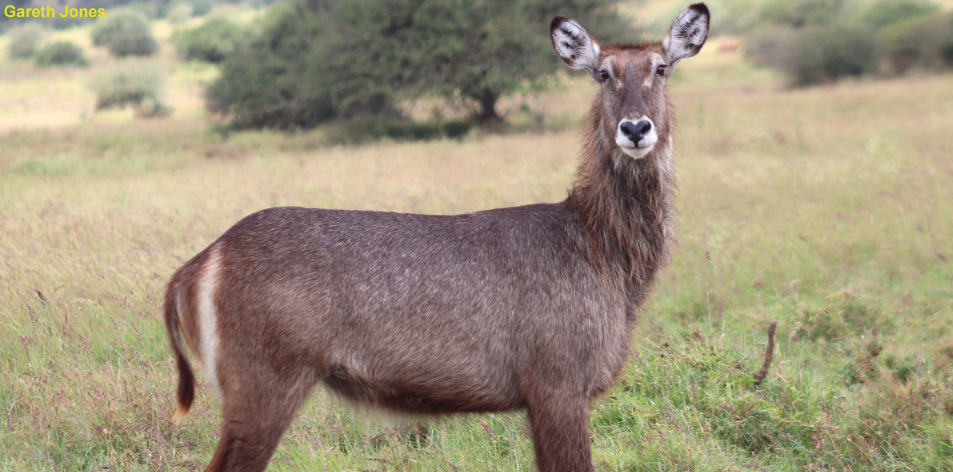
The Hybrid Waterbuck – Article by Gareth Jones
The Hybrid Waterbuck Of The Nairobi National Park
Waterbuck are one of those species in the Nairobi National Park that are not often seen and are therefore not really predictable on their exact location. I do know they are seen most often in the Langata forest and along the Athi River basin, but even then they can be elusive.
So it is always pleasant to have a surprise sighting, as a few days ago. As I drove through the Langata forest into an area with tall trees and open green glades, two males were resting peacefully and one was so relaxed that he continued to remain to lay down. As I watched them, they were both magnificent with full bodies and thick curved strong horns, in the early morning light. Seeing them in this unlikely location made me wonder just how much do they wander in the park?
Some interesting facts include …
1. Their long, spiral horns curve backwards, then forward. Only the males have horns, which can grow up to 22-39″ long.
2. Males typically weigh 437–578 lbs and females 355–472 lbs.
3. The coat colour varies from brown to grey.
4. As their name suggests, they have a close connection with water. Waterbuck always live near a body of water and use it to escape from a range of predators, which include lions, cheetahs, hyenas, and African hunting dogs.
5. They have an oily secretion that covers their coat & smells very unpleasant. This helps them to find a mate and makes their coat waterproof. In recent years researchers have also noted that the pungent unpleasant odour of their furry coat is also a powerful insect repellant, and is very effective against Tsetse flies. Researchers in Kenya have managed to synthetically produce a chemical product that smells very similar to waterbuck. They are using this chemical solution on cattle with wonderful results. It is hoped that the research results will allow for mass production of an insect repellant for domestic livestock that has a distinctly unpleasant waterbuck type smell.
6. They live in herds of 6-30 animals, with one male who defends his territory. Female babies stay with the herd, but males leave at the age of about 8 months and live in a herd with other young males.
7. The gestation period lasts for about nine months. After which, the female will give birth to a single calf.
8. A few days before calving, the mother will isolate herself in the thickets. After birth, it will take the newborn around half an hour to stand on its feet and to have its first suckle.
9. The young calves will remain hidden in the thickets for around two to four weeks before they join their mother in the fields.
10. Mothers nurse their calves for as long as six to eight months. They are then weaned off and both mother and calf will join the herd. Often calves find groups their age to spend most of their time with.
11. Waterbuck can live up to twelve years in the wild. Hybrid Waterbuck
There are two species of waterbuck found in Africa, the species found in the Nairobi National Park is an interbred hybrid mix of the Defassa Waterbuck, and the Common or Ellipsen Waterbuck, this is unique as there are only three places in Africa where the sub-species have interbred. The easiest way to tell the difference is to look at the white markings on their rear. In the Defassa this is almost entirely white, while in the Common or Ellipsen Waterbuck , there is a clear white ring as if they had sat on a toilet seat with wet white paint! The Nairobi National Park waterbuck show variations of both sub-species in their markings. It is thought that the rear markings are used as locators for waterbuck to see each other, either in the dark, or when following at speed.
Next time you are in the park, keep a good lookout for them in the forested wet areas but also be prepared for the unexpected.


